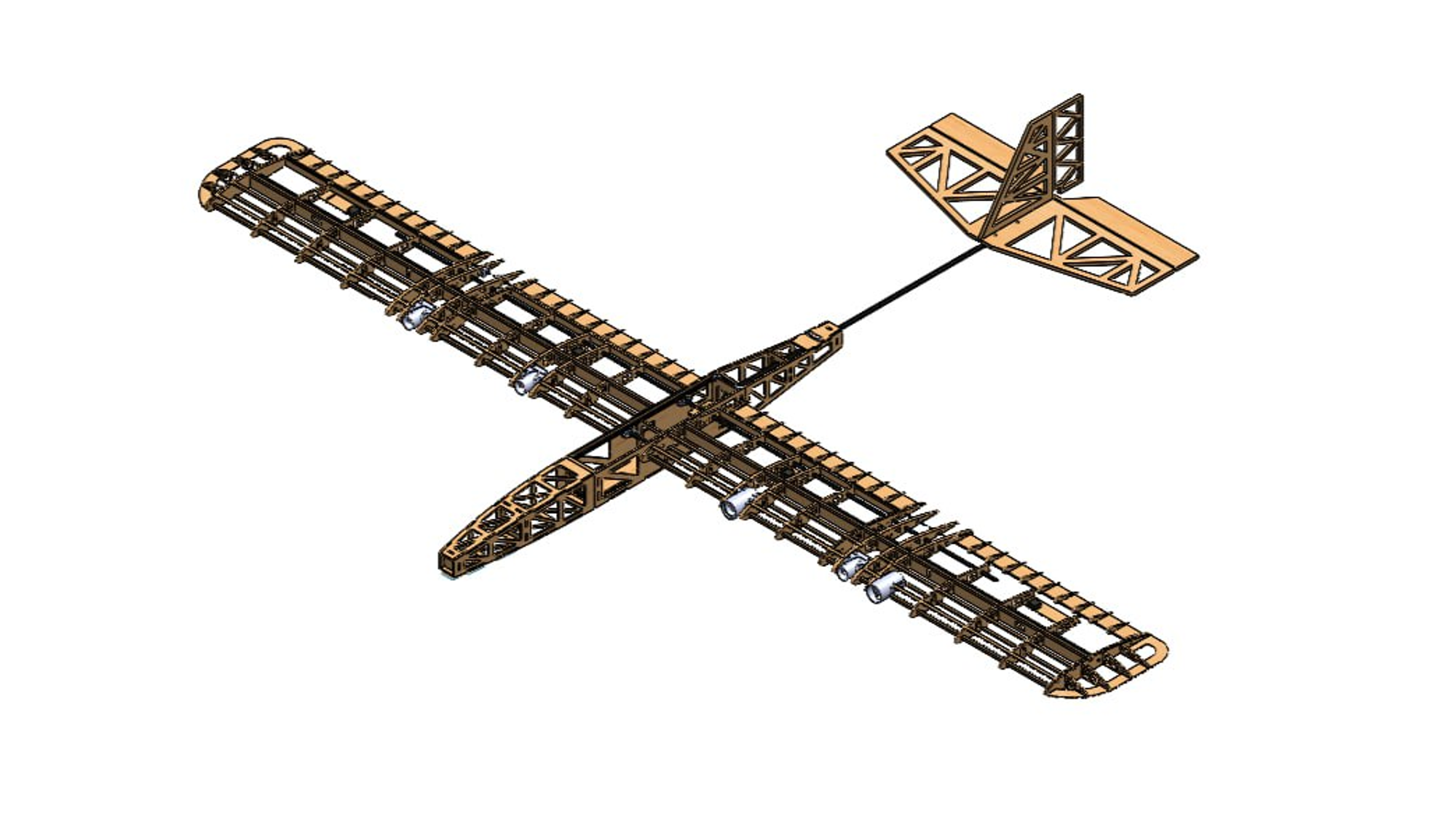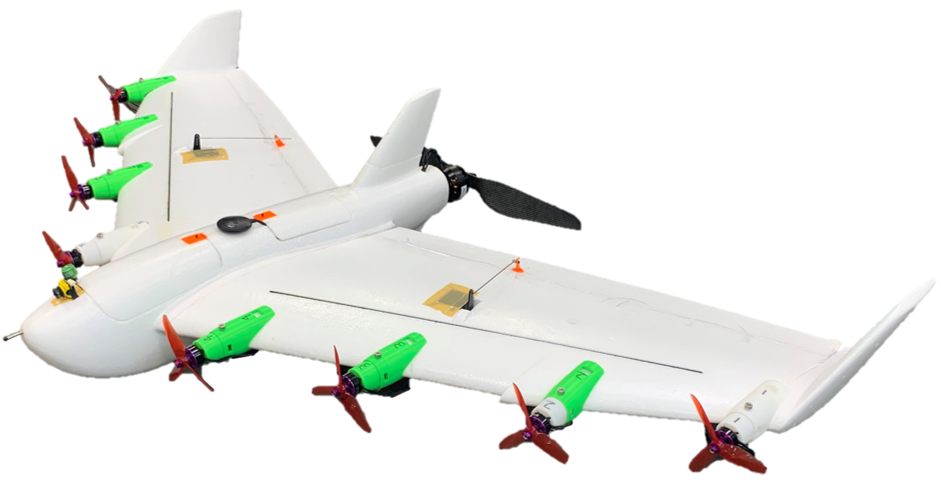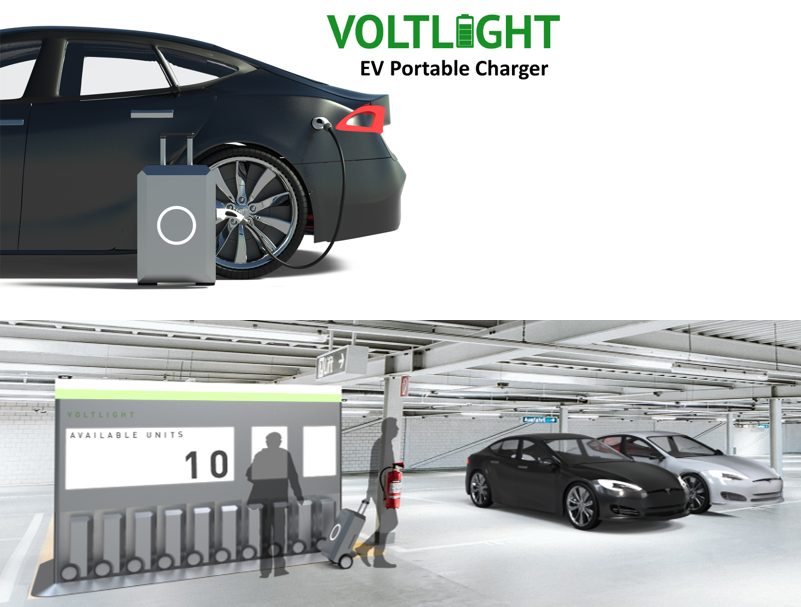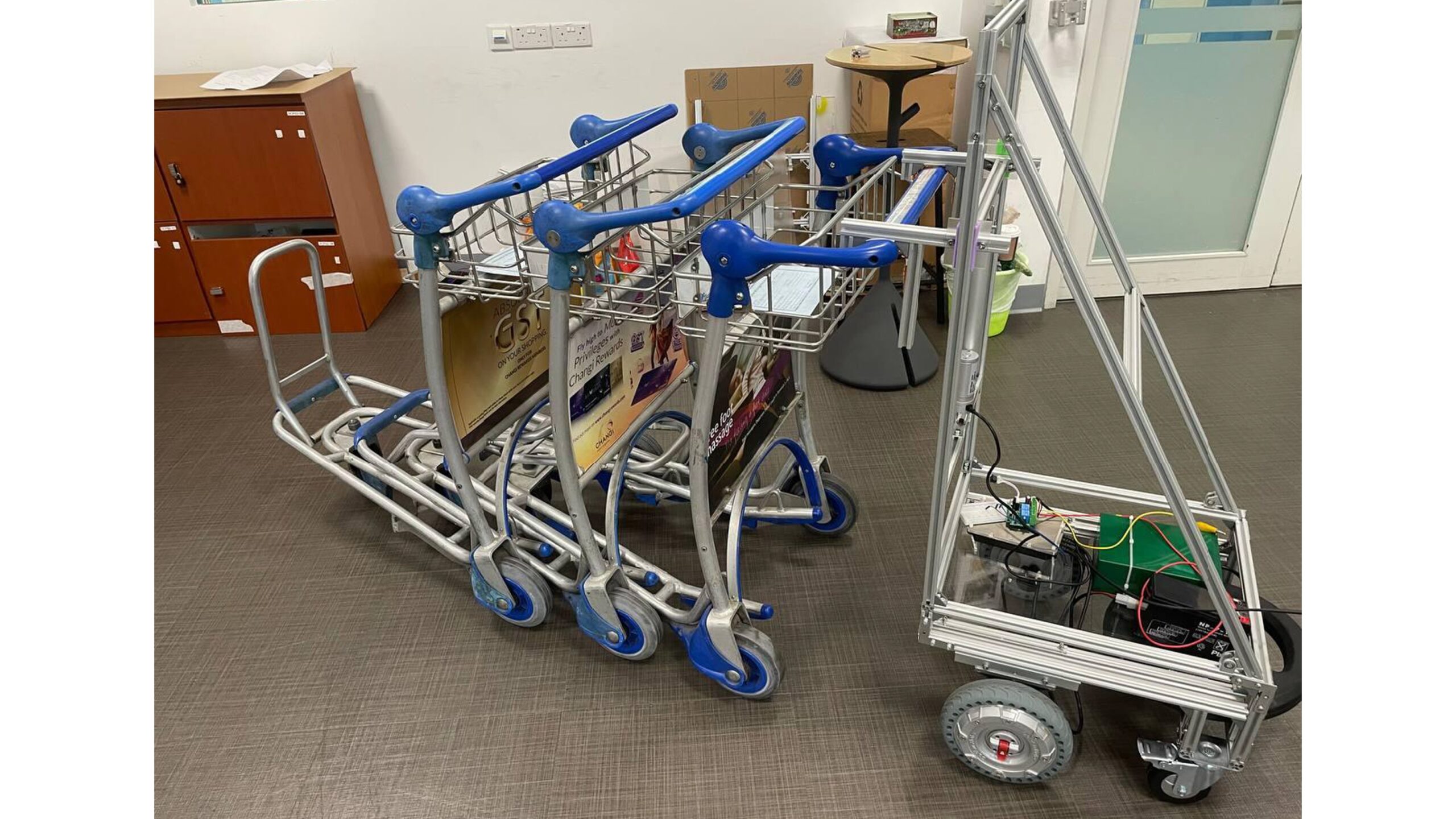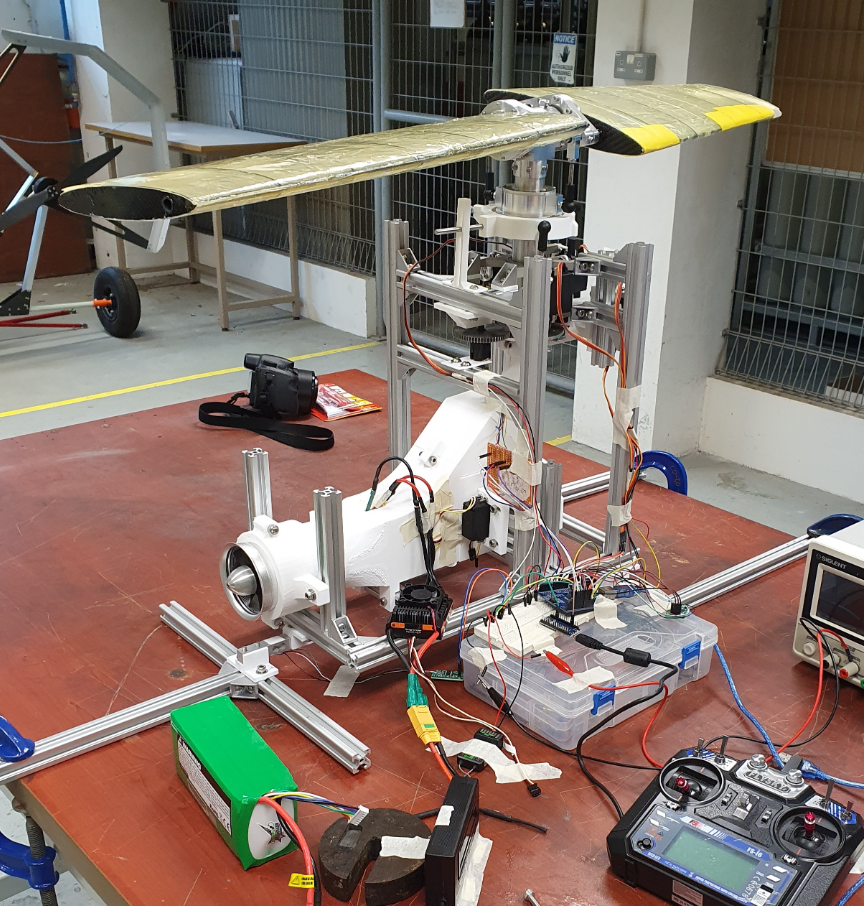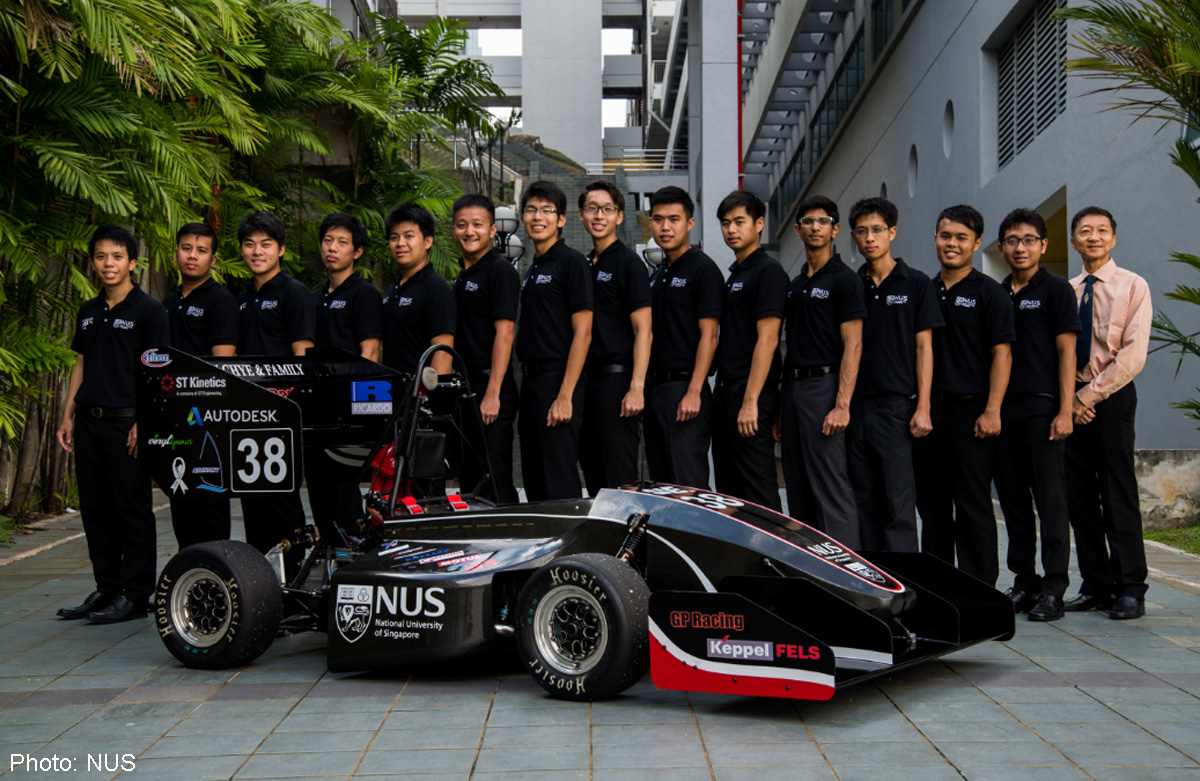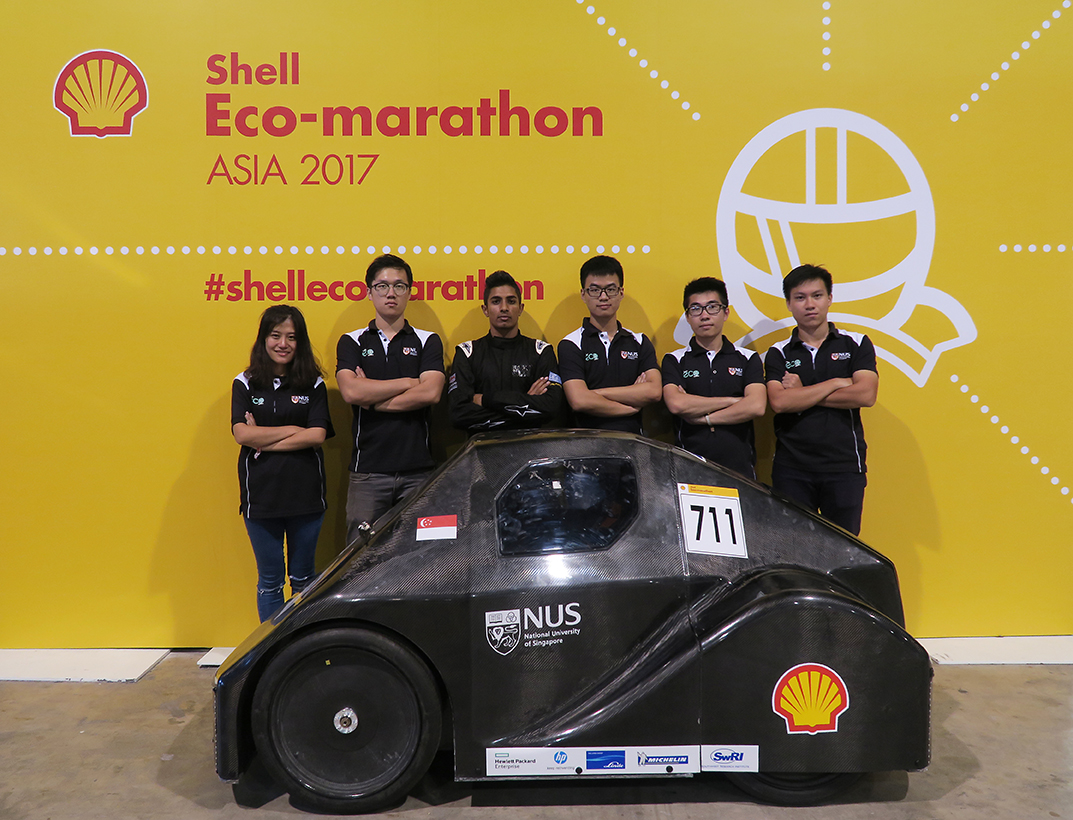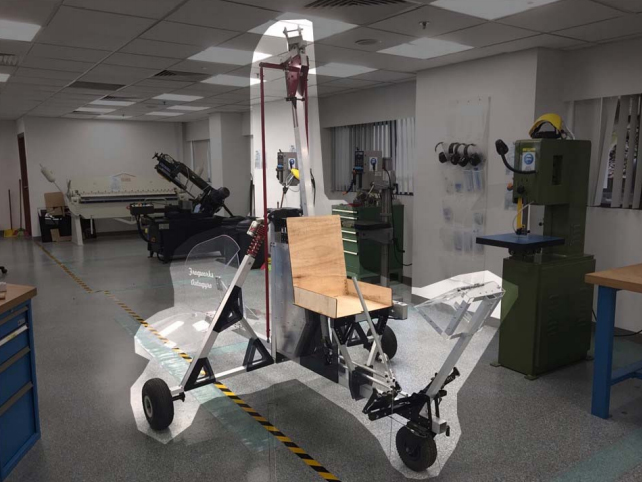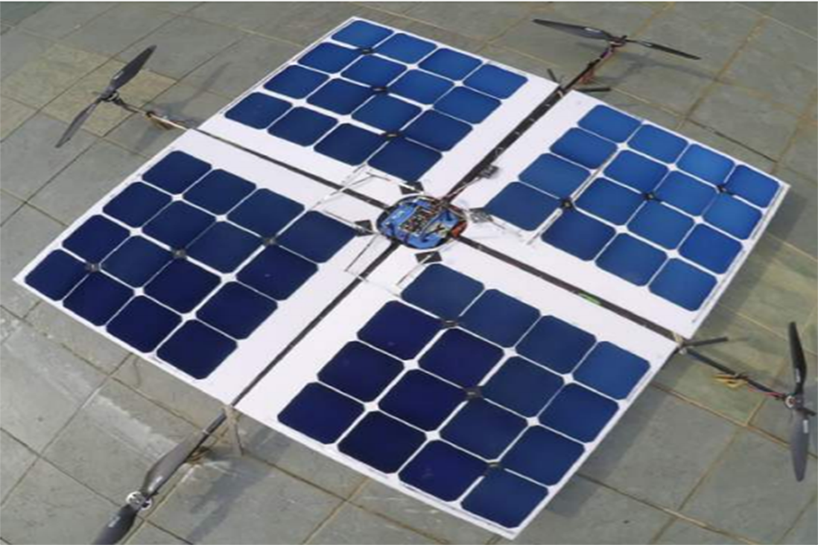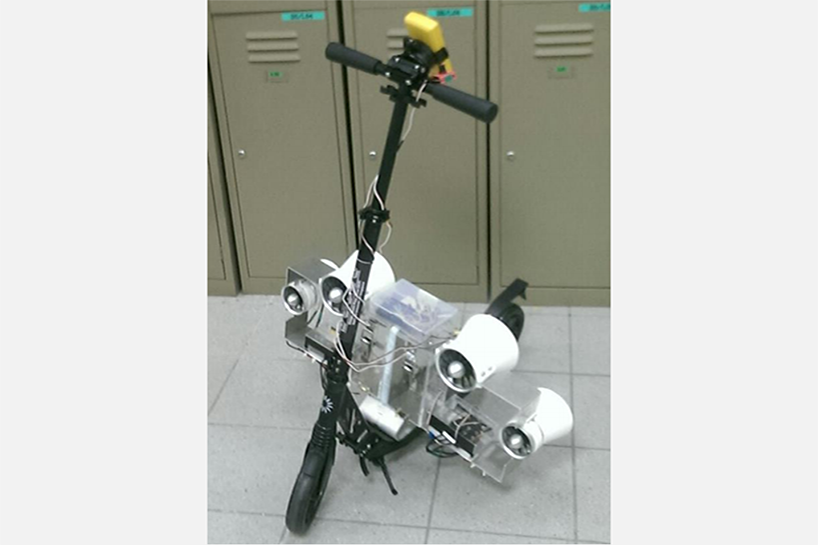Innovating for Future Mobility
Projects in this theme aim to design future mobility solutions and novel vehicles to move people and goods faster, and more efficiently, and more comfortably.
This project aims to investigate the integration of distributed propulsion systems into blended wing body aircraft to augment low-speed flight characteristics during pivotal phases such as take-off and landing in enhancing flight performance.
This project seeks to combat deforestation and forest fire threats in Indonesia by equipping conservationists with real-time forest monitoring capabilities through the use of fixed wing unmanned aerial vehicles (UAVs).
In this project, we redesigned a cockpit to reduce the cognitive workload of pilots such that we can be a step closer to making safe, single-pilot cockpits a reality for commercial flights.
This project aims to automate the tasks of the pilot monitoring by having a smart glasses display checklists and automating the switches.
This project aims to improve the low-speed flight characteristics of Blended Wing Body aircraft, a highly efficient aircraft concept, by the use of Distributed Electric Propulsion (multiple motors mounted on the wing).
This project aims to address the problem of limited electric vehicle (EV) charging infrastructure by designing an EV portable charger, allowing for convenient charging anywhere, anytime.
In this project, we designed an improved actuation system for an existing autonomous robot to collect multiple trolleys at an airport.
Most drone delivery companies today utilise multi-rotor drones. However, such drones are not very efficient in flight and do not have the long-range capabilities of fixed-wing aircraft. This project explores the use of an electric powered canary rotor wing system for drones which combine the vertical take-off and landing capabilities of multi-rotor drones with fixed-wing aircraft.
The NUS Formula SAE race car project was started in 2001, when a group of enterprising third year engineering students dreamed of building a race car for participation after their graduation in the intervarsity FSAE competition, held every May in Michigan, USA. Since then the project has evolved into an important educational component of the NUS Engineering Programme.
The NUS Eco-car Project is embarked on by NUS Engineering to provide undergraduate students a chance to express themselves in a practical competition. Shell Eco-Marathon is an annual fuel mileage competition where teams showcase creative solutions to present problems. It is an exhibition of technological advancements and creative talents.The principle: Challenging thousands of students to design, build and drive the ultimate fuel-efficient vehicle to extend as far as possible the distance that can be covered on a single litre of fuel. Students get to compete with more than 100 universities from more than 20 countries to push the boundaries of energy efficiency.
A team of eight engineering students have successfully built Singapore’s first personal flying machine, dubbed Snowstorm. Comprising an intricate design of motors, propellers and inflated landing gear set within a hexagonal frame, Snowstorm is an electric-powered aircraft capable of vertical take-off and landing that can be controlled by a single person seated within it.
World’s lightest electric paraglider trike. Featured in National Geographic Channel’s “Machine Impossible” episode in July 2016.
The future of short distance travel is expected to take to the skies by the next decade in lieu of increasingly congested roads and our insatiable thirst for a more efficient mode of transport. This calls for an aircraft that is small enough for personal trips and yet intuitive to control, such that anyone is able to pilot it with practice. Our team brought electric propulsion to personal flying autogyros to make flying them more environmentally friendly and affordable.
The use of Personal Mobility Devices (PMDs) has been increasing in the past few years, not only by the disabled or elderly but also everyday commuters. While convenient, these devices are not suited for different weathers such as rain or a hot climate such as Singapore. Our solution to this problem is Weatherbox, a modular add-on box for multi-weather commute. Weatherbox consists of a user-friendly convertible hood and a cooling system to provide comfort for the passenger in any weather.
Battery-powered multi-copters are used for a variety of applications ranging from surveillance to recreation. However, the finite energy batteries require the multi-copters to be recharged frequently. The NUS Solar Helicopter team is building a fully solar-powered multi-copter drone to enable superior flight time, operating range and utility.
Last-mile refers to the distance between transportation nodes which is not covered by public transportation. The team is developing an alternate and viable personal mobility device to traverse the last-mile. The product is catered to general commuters as an alternate to existing personal mobility devices such as bicycles and electric scooters
This project aims to develop an aerodynamic model of a large capacity wing-in-ground effect (WIG) craft that is efficient and capable of sustained flight. The aerodynamic model is evaluated based on its lift-to-drag ratio, duration of flight, take-off and landing capability and stability. Scaled down prototype of the WIG craft has been fabricated and tested. Computational fluid dynamics simulations are further used to study the ground effect.
Electric engine systems are useful in overcoming the efficiency constraints of internal combustion engines. However, the current electric engine systems fall short on consumer expectations of reliability, low maintenance costs and energy use. This project aims to increase the efficiency of propulsion system and energy recovery in hybrid electric vehicles. The team is developing a split-axle hybrid system to provide higher energy efficiency while ensuring low complexity in assembly.



